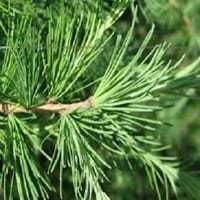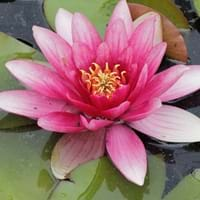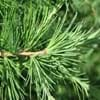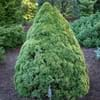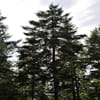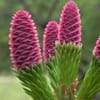About Siberian Larch and Hardy Daylily
Life Span
Perennial
Perennial
Type
Needled or Scaled Evergreen
Aquatics
Origin
Eastern Europe, Northern Europe, Russia/Siberia, Central Asia, Nepal, China
World/Pandemic
Types
not available
Not Available
Habitat
Cold Regions
Ponds
USDA Hardiness Zone
1-5
4-9
Sunset Zone
A1, A2, A3, 1a, 1b, 2a, 2b
21,22
Habit
Upright/Erect
Not Available
Minimum Height
Not Available
Flower Color
Green, Red, Yellow
White, Yellow, Red, Orange, Pink, Magenta, Fuchsia, Coral, Peach, Blue Violet, Ivory
Flower Color Modifier
Bicolor
Bicolor
Fruit Color
Brown, Yellow
Green
Leaf Color in Spring
Light Green
Green, Dark Green
Leaf Color in Summer
Light Green
Green, Dark Green
Leaf Color in Fall
Yellow
Green, Dark Green
Leaf Color in Winter
Not Available
Not Available
Leaf Shape
Needle like
Round
Plant Season
Spring, Summer, Fall
Summer, Fall
Sunlight
Full Sun, Partial Sun
Full Sun, Partial Sun
Type of Soil
Clay, Loam, Sand
Clay, Loam, Sand
The pH of Soil
Acidic, Neutral, Alkaline
Neutral
Soil Drainage
Average
Poorly Drained
Bloom Time
Not Available
Indeterminate
Tolerances
Drought
Wet Site
Where to Plant?
Ground
In Water
How to Plant?
Seedlings
Stem Planting
Plant Maintenance
Medium
Medium
Watering Requirements
Keep the Soil well drained
Plant grows in water
In Summer
Lots of watering
Lots of watering
In Spring
Moderate
Moderate
In Winter
Average Water
Average Water
Soil pH
Acidic, Neutral, Alkaline
Neutral
Soil Type
Clay, Loam, Sand
Clay, Loam, Sand
Soil Drainage Capacity
Average
Poorly Drained
Sun Exposure
Full Sun, Partial Sun
Full Sun, Partial Sun
Pruning
Prune to control growth, Remove damaged leaves, Remove dead branches, Remove dead leaves
Remove damaged leaves, Remove dead branches, Remove dead leaves
Fertilizers
All-Purpose Liquid Fertilizer
All-Purpose Liquid Fertilizer
Pests and Diseases
Armillaria root rot, larch sawfly, Needle rust
Not Available
Plant Tolerance
Dry Conditions
Drought
Flowers
Insignificant
Showy
Flower Petal Number
Single
Single
Foliage Texture
Fine
Coarse
Foliage Sheen
Matte
Glossy
Self-Sowing
Yes
Not Available
Allergy
Unknown
Not Available
Aesthetic Uses
Landscape Designing, Showy Purposes, Woodland margins
Showy Purposes, Water gardening
Beauty Benefits
Not Available
Not Available
Environmental Uses
Air purification
Air purification
Medicinal Uses
Unknown
Not Available
Part of Plant Used
Not Available
Leaves, Root, Stem
Other Uses
Application in Furniture
Can be made into a herbal tea, Culinary use, Used as Ornamental plant, Used in herbal medicines
Used As Indoor Plant
No
Yes
Used As Outdoor Plant
Yes
Yes
Garden Design
Feature Plant
Water Gardens
Botanical Name
LARIX sibirica
NYMPHAEA 'Charles de Meurville'
Common Name
Siberian Larch
Charles de Meurville Waterlily, Hardy Daylily
In Hindi
Siberian Larch
Hardy Daylily
In German
Sibirische Lärche
Hardy Daylily
In French
Mélèze de Sibérie
Hardy Daylily
In Spanish
Larix sibirica
Hardy Daylily
In Greek
siberian larch
Hardy Daylily
In Portuguese
siberian larch
Hardy Daylily
In Polish
Modrzew syberyjski
Hardy Daylily
In Latin
Siberian larch
Hardy Daylily
Phylum
Pinophyta
Magnoliophyta
Class
Pinopsida
Magnoliopsida
Order
Pinales
Nymphaeales
Family
Pinaceae
Nymphaeaceae
Clade
Not Available
Angiosperms
Tribe
Not Available
Not Available
Subfamily
Not Applicable
Not Available
Number of Species
Not Available
Properties of Siberian Larch and Hardy Daylily
Wondering what are the properties of Siberian Larch and Hardy Daylily? We provide you with everything About Siberian Larch and Hardy Daylily. Siberian Larch doesn't have thorns and Hardy Daylily doesn't have thorns. Also Siberian Larch does not have fragrant flowers. Siberian Larch has allergic reactions like Unknown and Hardy Daylily has allergic reactions like Unknown. Compare all the properties and characteristics of these two plants. Find out which of these plant can be used as indoor plant. If you are interested to decorate your house and garden, find out aesthetic uses, compare them and select the plant which will beautify your surrounding. Along with beautification, try comparing medicinal and edible uses of Siberian Larch and Hardy Daylily and you can choose the plant having best and most benefits.
Season and Care of Siberian Larch and Hardy Daylily
Season and care of Siberian Larch and Hardy Daylily is important to know. While considering everything about Siberian Larch and Hardy Daylily Care, growing season is an essential factor. Siberian Larch season is Spring, Summer and Fall and Hardy Daylily season is Spring, Summer and Fall. The type of soil for Siberian Larch is Clay, Loam, Sand and for Hardy Daylily is Clay, Loam, Sand while the PH of soil for Siberian Larch is Acidic, Neutral, Alkaline and for Hardy Daylily is Neutral.
Siberian Larch and Hardy Daylily Physical Information
Siberian Larch and Hardy Daylily physical information is very important for comparison. Siberian Larch height is 910.00 cm and width 30.00 cm whereas Hardy Daylily height is Not Available and width 120.00 cm. The color specification of Siberian Larch and Hardy Daylily are as follows:
Siberian Larch flower color: Green, Red and Yellow
Siberian Larch leaf color: Light Green
Hardy Daylily flower color: White, Yellow, Red, Orange, Pink, Magenta, Fuchsia, Coral, Peach, Blue Violet and Ivory
- Hardy Daylily leaf color: Green and Dark Green
Care of Siberian Larch and Hardy Daylily
Care of Siberian Larch and Hardy Daylily include pruning, fertilizers, watering etc. Siberian Larch pruning is done Prune to control growth, Remove damaged leaves, Remove dead branches and Remove dead leaves and Hardy Daylily pruning is done Remove damaged leaves, Remove dead branches and Remove dead leaves. In summer Siberian Larch needs Lots of watering and in winter, it needs Average Water. Whereas, in summer Hardy Daylily needs Lots of watering and in winter, it needs Average Water.
